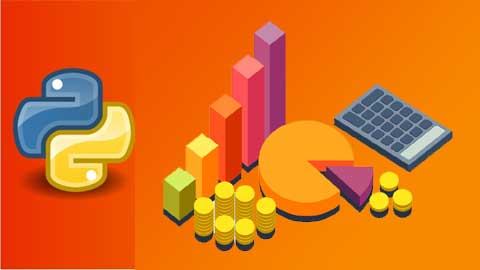Python, the most rapidly evolving programming language, which has maximal popularity these days. This language is used by programming professional and others with the non-programming background too. Python finance certification also plays a very predominant role in the financial sector.
The rich set of libraries and has a rapid growth in almost all the sectors. The most interesting factor about Python is that it requires effortless learning, unlike other programming languages. Many professionals without prior coding knowledge also find python easy to learn and adapt in their day to day activities. This is because of the rich functionality and easy accessibility of Python.

In recent days, the Financial industry tries to include Python. Most of the investment and funding agencies are incorporating Python in trading and risk management. Both developers and quantitative analysts are getting to know the usage and importance of Python. Python takes its lead in Finance sector too. Many complex problems in this field can be fixed with Python, which may take enormous programming with other coding languages.
A Python finance certification course can be taken by any individual who doesn’t have prior knowledge of programming. These days python language is designed for financial analysts that suits their financial applications. The python finance program may start from the very basic concepts and evolve to focus on the investment and financial banking applications on a high-end. This makes the work of financial analysts easier.
On the other hand, the financial sector has started to adopt Python both for general-purpose and for quantitative analysis. This makes one understand the concepts behind risk management and trading concepts. Learning python with varied practical examples makes one get a deep view of how the fundamentals work. The key characteristics and the modern approach to the problems in finance and risk management can be analyzed with Python.
Python- An Introduction:

Python is a programming language designed to create web applications. It is also used to create workflows in addition to creating software. It can connect with databases and modify the files. When it comes to big data Python stands on the top to handle it and solves the complex mathematical problems.
Python- usage:
Python is platform-independent, it works on different platforms like Windows, Mac, Linux, etc. The syntax of the Python is very simple and is similar to the English language. Also, the syntax has very few lines compared with other programming languages. Python works on an Interpreter, which makes the code execute as soon as it is written. The coding in Python can be an either procedural or functional way.
Python for Finance:

The basics of Python for Finance put forward the concepts of trading and stocks strategies. Which may then move on to time series data and setting up the workspace and so on.
- Starting with the introduction to time series with the most common and important financial analyses, which includes moving windows, volatility calculation and other Python packages.
- The development process is formulated step-by-step with the usage of algorithms and codes.
- Using strategies like Pandas and so to formulate the process.
- Optimization is performed which improves the performance and robustness.
Learning Objectives:
- The day-to-day activities in the Finance and Management sector can be explored along with its benefits.
- The usage of Python in the modern Finance and Financial derivatives, Risk management and Portfolio management can be analyzed in detail.
- Both the basic and fundamental programming techniques which can be used up in different real-time scenarios can be learned.
- Have a hands-on experience of programming in Python to solve financial problem.
- Detailed coding knowledge in Python with hands-on will be focused.
The course contains:
- Python programs to work on complex manipulation tasks.
- Implementation of high-end finance applications.
Python for Finance-The Basics: Pandas
Data manipulation packages often come in mind when Python is used in finance. This package is nothing but Pandas. Other such packages are NumPy, SciPy, Matplotlib and so. But the best to use will be Pandas as a beginner. With Pandas, one can import data, explore and manipulate it. Above all most of the common financial analyses on the imported data can be performed.
Import Python into Financial data:
Pandas play a major role in importing and using financial data. The package used for this work is pandas-DataReader, which reads the data from the sources like Google or World bank. Similarly, there are few other packages that can be used to access data from other sites.
Working on Stocks:
Python is used by most of the investment banks and consumer banks to create quantitative models, which can be utilized to estimate and calculate returns and risks. Python being very simple, it is used to import, manipulate ad visualize the stock data. Also, it is highly readable that Python can be used to build trading models.
Inference and Sampling:
The real meaning of the return of stocks, equity funds are analyzed in Financial analysis. This is based on the historical data for a few years. This analysis adds to the Statistical inference, where the sample data is used to infer the details of the target variable. Statistical inference holds the details like population, samples and random sampling. Then, Python can also be used to calculate the rage of the mean return of a stock with the knowledge of Confidence interval.
The learning of Python Finance Certification will be productive for Financial analysts, Risk analysts, Finance controllers, Corporate managers, Credit analysts, Subject Matter Experts and Management students. This doesn’t end here. Anyone who wishes to have a great future in finance sector may always focus on the Python language.
When comes to Financial Analysis, one must be capable of equipping both Python and statistical skills which gives a huge knowledge. This helps to analyze and work on the financial data.